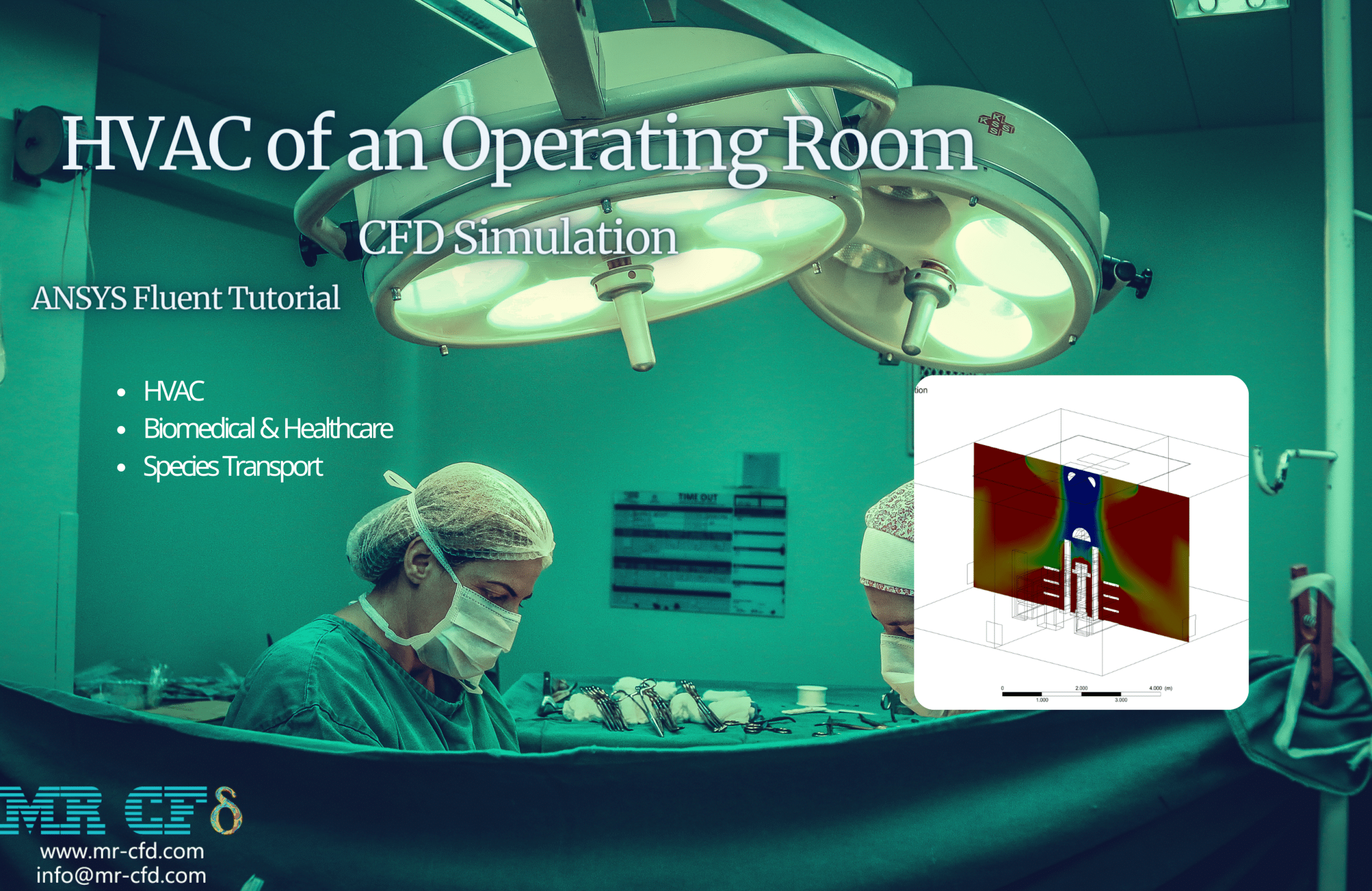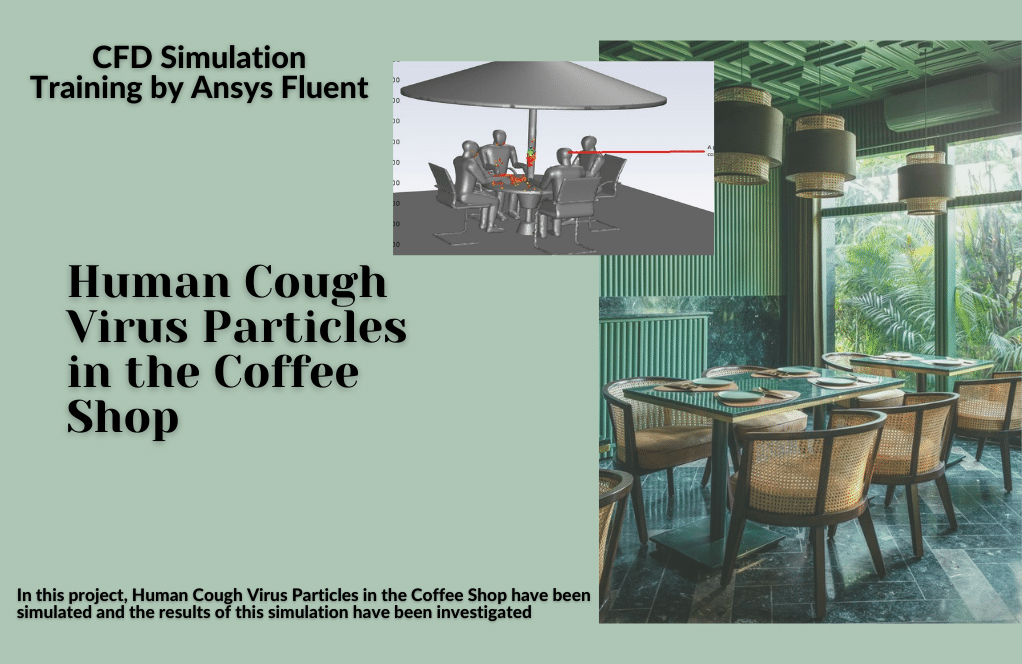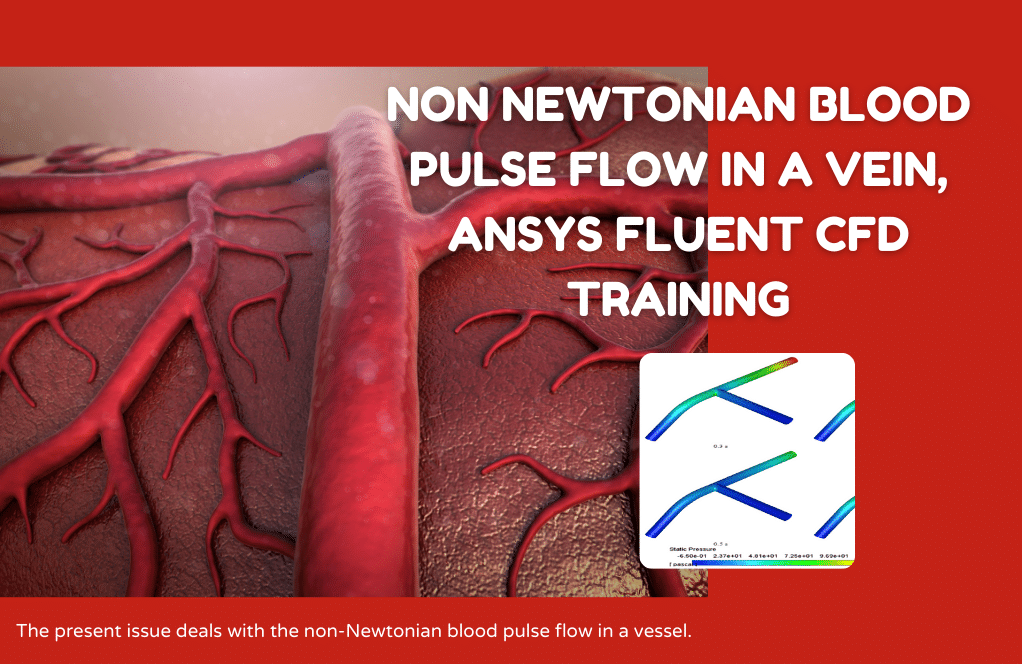HVAC of an Operating Room ANSYS Fluent CFD Simulation Tutorial
$140.00 Student Discount
- This problem simulates the HVAC of an operating room by ANSYS Fluent software.
- A linear flow called an air curtain prevents contaminated flow into the fresh air, as an HVAC system.
- The geometry of the present model is drawn by Design Modeler software.
- The model is then meshed by ANSYS Meshing software. The element number is equal to 4137570.
- The Species Transport model is used to analyze the behavior of different species.
Click on Add To Cart and obtain the Geometry file, Mesh file, and a Comprehensive ANSYS Fluent Training Video.
To Order Your Project or benefit from a CFD consultation, contact our experts via email ([email protected]), online support tab, or WhatsApp at +44 7443 197273.
There are some Free Products to check our service quality.
If you want the training video in another language instead of English, ask it via [email protected] after you buy the product.
Description
HVAC of an Operating Room HVAC Description
This problem simulates the HVAC of an operating room by ANSYS Fluent software. We perform this CFD project and investigate it by CFD analysis.
In the present case, we model an operating room HVAC (heating, ventilation, and air conditioning). This room uses an air conditioning system to contain the equipment and persons, including the doctor and patient.
The system uses a laminar flow to purify the operating room’s air. A linear air curtain flow prevents contaminated flow into the fresh air. The source of the contaminants gases is assumed on the patient’s body. The inlet air moves from the top to the bottom of the operating room for the clearing process.
Then, it transfers contaminated gases and particles around the patient to the room’s corner. Air-curtain prevents polluted air from returning to the room. Eventually, the polluted air leaves the lower part of the room. The geometry of the present model is drawn by Design Modeler software.
This geometry is related to the hospital room with an HVAC system. The model is then meshed by ANSYS Meshing software. The model mesh is unstructured, and 4137570 cells have been created.
Method
The Species Transport model is generally used to analyze the behavior of different species simultaneously. Therefore, since the present model’s primary purpose is to investigate the distribution of pollutants, oxygen, nitrogen, and air humidity in the operating room space, this model should be used. Several gas species can be defined using this model as a set of transfer equations.
After applying the species transfer model, oxygen, nitrogen, vapor, and pollutant gases are determined.
HVAC of an Operating Room Result
After simulation, contours of velocity, pressure, temperature, and species mass fraction (including oxygen and contaminants) are obtained. Also, velocity vectors are provided in a 2D plane. The temperature contour indicates that the incoming airflow of the air conditioning system cools the air around the patient’s body with high heat.
So this system has succeeded in doing the cooling process properly. Velocity vectors show that fresh air flows from the panels on the ceiling into the room’s space and moves to the sides. This movement causes contaminants to spread to the patient’s surface.
The air curtain is then formed according to the mechanism of this type of system and prevents the return of pollutants to the patient’s body by creating a strong airflow. As a result, airflow circulates in the sides of the room and is directed towards the outlet panels.
In addition, the study of the contour mass fraction of contaminants shows that the behavior of pollutants is entirely consistent with velocity vectors. The air conditioning system (HVAC) properly removes contaminants from the patient’s body and directs them to the outside environment.
Reviews
Related products
-
Sale
Coronavirus CFD Simulation Training Package, 10 Practical Exercises
Rated 4.80 out of 5$1,440.00Original price was: $1,440.00.$160.00Current price is: $160.00. Student Discount -
Non Newtonian Blood Pulse Flow in a Vein, ANSYS Fluent CFD Training
Rated 4.75 out of 5$120.00 Student Discount












Hazle Nikolaus –
This is awesome product! It shows how to do HVAC of operating room by ANSYS Fluent. Very important and hard topic. The product has both editable and ineditable files of geometry and mesh. Also has good training video that teaches all steps and settings of simulation. I think this product is great for learning CFD simulation.
MR CFD Support –
Thank you for your kind words and positive feedback. We are glad that you find our product awesome and useful. We provide both editable and uneditable files of geometry and mesh so that you can choose whether you want to use the original model or customize it yourself. We also provide a good training video that teaches all steps and settings of the simulation process, from geometry creation to post-processing. We hope our product can help you learn more about CFD simulation and improve your skills and knowledge.
Winifred Zboncak –
How many elements and nodes in mesh? has mesh good quality? Can I change mesh if I want? I want to buy this product, but I want to make sure mesh is good for my simulation goals. Thank you for help.
MR CFD Support –
Thank you for your interest in our product and your question about the mesh file. The mesh file contains about 4 million elements and nodes. The quality of the mesh is very good, as we used ANSYS Meshing software to generate a high-quality mesh for this complex geometry. You can check the quality of the mesh by using the Mesh Metrics tool in ANSYS Meshing software. You can also change the mesh if you want by using the Mesh Edit tool in ANSYS Meshing software. You can refine or coarsen the mesh, smooth or inflate the mesh, or modify the mesh topology as you wish. We hope that our product can meet your simulation goals and expectations.
Mr. Arnoldo Hayes –
I went and prepared this through the introduction of my colleague; it was a comprehensive training. Congratulations on your excellent site.
Pasquale Breitenberg MD –
Wow, this is very complete and detailed product. I like that you give both editable and ineditable files of geometry and mesh. This way, I can choose if I want to use original model or change it myself. The training video is also very clear and informative. It covers all steps and settings of simulation process. This product is worth the price.
MR CFD Support –
Thank you for your appreciation and recognition of our product. We are happy that you find our product complete and detailed.
Jacinto Mohr –
This HVAC simulation is incredibly detailed. Great job on creating a comprehensive model of an operating room’s atmosphere, especially with how contaminants and airflow are handled. It’s interesting to see how the air curtain works to protect the patient area.
MR CFD Support –
Thank you for your positive feedback! We’re thrilled to see that you appreciate the intricacies of our HVAC operating room simulation and how it demonstrates the airflow management and contaminant control that’s essential in such a critical environment. Your recognition of the air curtain’s effectiveness in the model is greatly valued.
Myra Kohler –
Absolutely blown away by the precision and the level of detail in the HVAC simulation for the operating room! It’s clear that the team behind this ANSYS Fluent tutorial has thought through every aspect, from the contaminant distribution to air quality control. The results give such a profound insight into the effective management of airflow dynamics — crucial for safe operating environments. High praise for the stellar work!
MR CFD Support –
We’re thrilled to hear that the HVAC operating room simulation tutorial was able to impress you with its detail and accuracy! Your appreciation truly means a lot to our team. It’s our aim to provide high-quality educational material that can help understanding the intricacies of air flow management in critical settings like operating rooms. Thank you so much for sharing your thoughts!
Dr. Tamia Mitchell III –
I found the detailed explanation of the HVAC system operation quite insightful. The approach of using a laminar flow in conjunction to air curtains to maintain sterilized conditions is ingeniously applied. Great job on thoroughly explaining the movement of air and pollutant particles within the operating room!
MR CFD Support –
Thank you for acknowledging our efforts to provide a comprehensive overview of the HVAC operational dynamics in an operating room. We’re thrilled that you found the simulation informative and our explanation clear. Your appreciation motivates us to continue delivering high-quality simulations and tutorials.
Isobel Kub –
I found the focus on creating a purified environment impressive. The approach taken to manage and remove contaminants is crucial.
MR CFD Support –
Thank you for the commendation! We are thrilled to hear that the approach for enhancing air purity in an operating room was well-received. Ensuring a contaminant-free environment is crucial for medical facilities, and we are glad our simulation could accurately depict that.
Prof. Brown Kuhic –
This tutorial truly improved my understanding of HVAC systems in medical settings. Impressive detail on both the function and simulation process for an operating room environment.
MR CFD Support –
We sincerely appreciate your positive feedback. It’s gratifying to know that our HVAC of an Operating Room tutorial met your expectations and enhanced your comprehension. Thank you for choosing our products to aid in your studies!
Prof. Onie Purdy –
Can you give more examples or cases to simulation? Like different air flow rates, different temperature settings, different number of people in room, different types of surgeries, etc. I think this would make product more interesting and versatile. It would also let me compare and contrast different scenarios and outcomes. Thank you.
MR CFD Support –
Thank you for your suggestion and interest in our product. We appreciate your input and feedback on how to improve our product. We agree that giving more examples or cases to the simulation would make the product more interesting. you can also contact us in order to assist you modeling and simulating different condition’s effect in the solution.
Angie Towne –
The simulation depiction has positively highlighted the proficiency of the HVAC system in maintaining a purified atmosphere within the operating room context. Kudos to the comprehensive modeling that illuminates the air flow, contaminant dispersal, and the decisive role of the air curtain.
MR CFD Support –
We immensely appreciate your gracious feedback on our HVAC simulation tutorial. Having customers acknowledge the meticulousness we pour into our projects is very fulfilling. Thank you for taking the time to share your excellent experience. Your satisfaction is a compelling incentive for us to continue delivering high-quality learning resources.
Elroy Strosin II –
I was really impressed by how the HVAC system was modeled to ensure it adequately controls contaminants in the operating room. The detailed setup of the CFD simulation played a huge role in visualizing and understanding airflow patterns, which are crucial to maintaining a sterile environment. Great work on this tutorial!
MR CFD Support –
Thank you for your kind words! We’re glad to hear that the tutorial on the HVAC of an operating room was helpful to you. Ensuring a clean and controlled environment is paramount in an operating room, and our goal with this CFD simulation was to provide a clear visualization of how air flows and contaminants are managed. We are delighted that this came through well in the tutorial. If you ever have more questions or need further assistance in your understanding of HVAC simulations, please don’t hesitate to reach out!
Kristopher Harber –
I loved learning from the ‘HVAC of an Operating Room ANSYS Fluent CFD Simulation Tutorial.’ It was clear and comprehensive, making it easy to understand the distribution of pollutants in an operating room. The step-by-step approach helped me grasp the complex concepts of HVAC systems and species transport modeling.
MR CFD Support –
Thank you for your positive review! We’re thrilled to hear that our tutorial was able to help you understand heating, ventilation, and air conditioning (HVAC) systems’ intricacies, as well as the species transport modeling in an operating room context. Your understanding of these complex concepts encourages us to continue delivering high-quality educational content. Thanks again!
Anika West –
I’m genuinely impressed with the detail in simulation results. The thorough analysis makes me confident in the accuracy of this HVAC CFD simulation for an operating room. Well done, MR CFD!
MR CFD Support –
Thank you so much for your positive feedback! We’re delighted that you are satisfied with the quality and depth of our HVAC simulation analysis. We strive to deliver the best possible results and it’s great to know that our efforts are appreciated. If you need further information or assistance with any other simulations, we’re here to help!
Freddie Lynch MD –
The simulation results sound impressive! The visualization and analysis capabilities offered by the HVAC CFD seem top-notch and provide crucial insights necessary for an effective operating room environment.
MR CFD Support –
Thank you for your kind words! We’re delighted that our HVAC of an Operating Room simulation tutorial exceeded your expectations and provided significant value in visualizing and optimizing a clean and safe environment in operating rooms. Your feedback is greatly appreciated!
Dr. Virgil Brakus II –
thanks Mr-CFD
Kaya Toy Jr. –
Extremely detailed and useful tutorial! The step-by-step guidance helped me understand how to simulate HVAC in an operating room effectively. The results and explanation of contaminants’ behavior was very enlightening.
MR CFD Support –
Thank you for your kind words! We’re thrilled to hear that our tutorial was able to guide you through your CFD simulation and provide you with the clarification needed on pollutants behavior. If you have any more questions or need further assistance in future projects, don’t hesitate to reach out!
Melvina Collier –
wonderful
Prof. Darrel Sipes –
I just completed the HVAC of an Operating Room tutorial and it was so informative! The step-by-step guidance made everything clear, and I was able to understand how HVAC systems can be crucial for contaminant removal in operating rooms. Excellent work on providing practical insights along with the technical aspects.
MR CFD Support –
Thank you for your kind words and for using our tutorial! We’re delighted to hear that the course was informative and helpful for your understanding of HVAC systems in critical environments like operating rooms. Your feedback is very much appreciated!
Vicente Maggio –
Wonderful tutorial for HVAC on ANSYS Fluent. The level of detail in explaining species transport and the air curtain’s role was highly enlightening.
MR CFD Support –
Thank you for your kind words! We’re thrilled to hear that our tutorial was informative and clear, especially regarding the species transport model and the operation of the air curtain system. We aim to provide comprehensive education on CFD analysis to individuals like you. Your feedback is much appreciated!